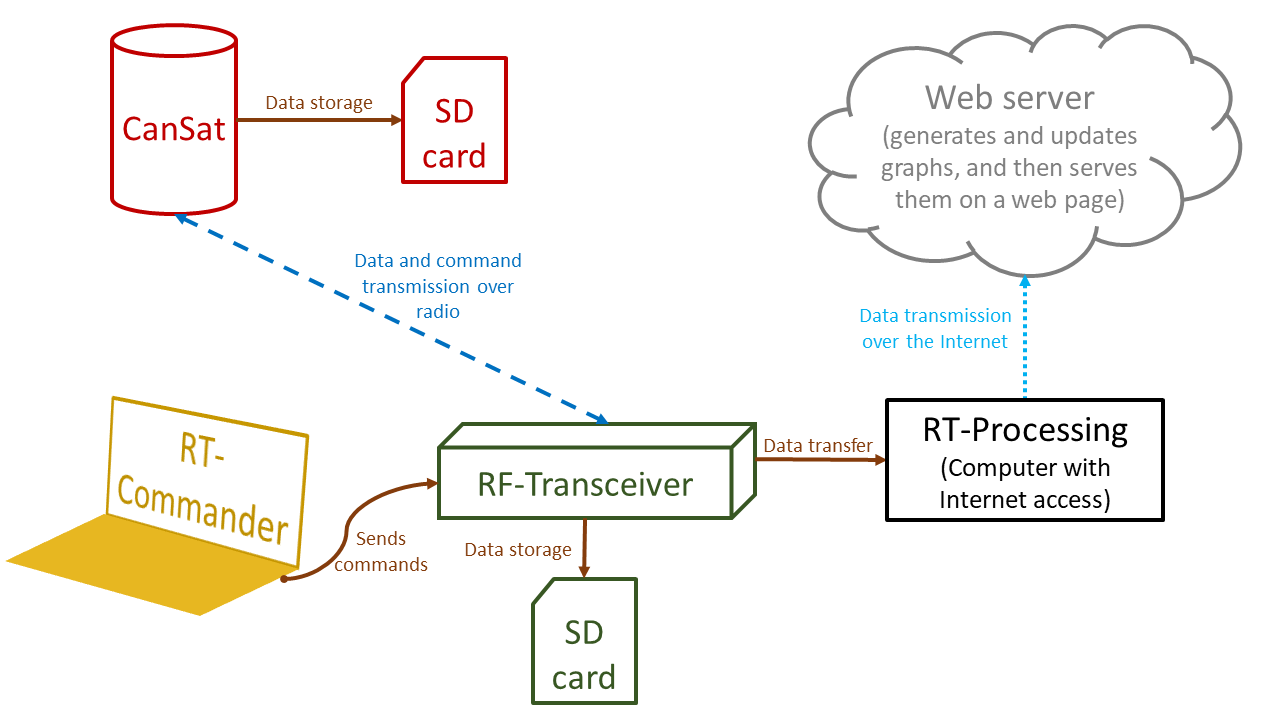Our project
Discover our project: learn more about the specifics of the primary mission as well as the subject of our secondary mission.

System design
Our CanSat system will include a number of subsystems in order to collect and stored the acquired data:
- The can itself acquires data every 70 msec (period still to be confirmed), stores the data on-board (SD-Card) and transmits it to the RF-Transceiver along with location data (GPS, altitude, velocity…); It transports two sub-cans which collect the same data and transmits them by radio both to the main can and to RF-Transceiver.
- The RF-Transceiver is our ground station: it received and stores the acquired data, and sends it to the RT-Processing. It also sends the commands received from the RT-Commander (not during the flight) to the can;
- The RT-Commander is our system control unit. It receives status information and possibly sends commands before and after the flight;
- The RT-Processing receives acquired data and processes it on the fly to display them in real-time on a website.

Primary mission
Like every other team, we have a primary mission that consists of measuring the air pressure and temerature, and transmitting it via radio to the ground as well as storing it on an SD card. And after the flight, we will generate temperature, altitude and pressure graphs! We might also create some other graphs related to our secondary mission.
More info about the design of our primary mission.
Secondary mission
Our secondary mission is to put two sub-cans in the main can. These will apply the same calculations as the main mission but on a larger perimeter.
More info about the design of our secondary mission.
Can design
Our can is 3D printed from a design we develop on Autodesk's Fusion 360 software. This allowed us to efficiently organize the composition of our mini probe. Inside the main canister is a space reserved for the canisters also called mini-Cansat (secondary mission). In addition, there is a square window for our GPS module, which needs a view of the sky to receive signals from the probes
In the upper part of the can, we will place the controlling electronic: a controller board, an SD Card, a GPS, an XBee module, and a battery, and the primary mission sensors. The lower part will be used for ( ou occupied by the subcans) the sub-cans and their ejection mechanism Our team is divided into several parts as the can itself is, including the part of the ejection of sub-cans (secondary mission). Currently the team is making two different designs. The most efficient one will be chosen for the final version.